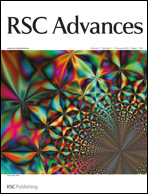Improved cyclability of lithium-ion battery anode using encapsulated V2O3nanostructures in well-graphitized carbon fiber†
Abstract
A novel one-dimensional (1D) V2O3@carbon nanocomposite has been successfully synthesized for the first time. In the synthesis procedure, the previously obtained V2O5·xH2O nanobelts act as template. By coating the nanobelts with a layer of polymerized C species under hydrothermal conditions followed by a calcination treatment at elevated temperature in an inert atmosphere, the V2O3@carbon nanocomposite was finally obtained. This nanocomposite consists of a well-graphitized carbon layer encapsulating the V2O3


 Please wait while we load your content...
Please wait while we load your content...